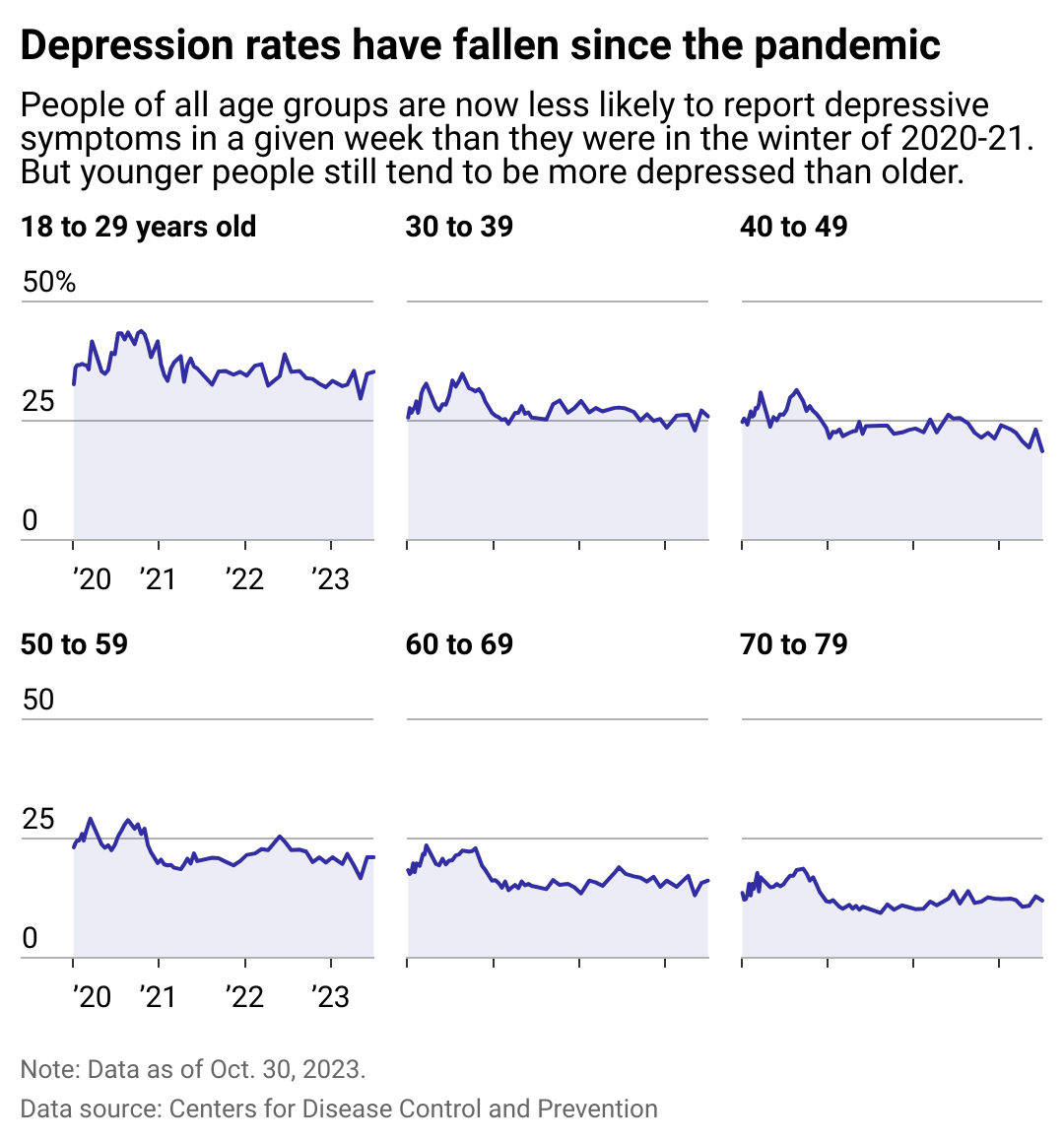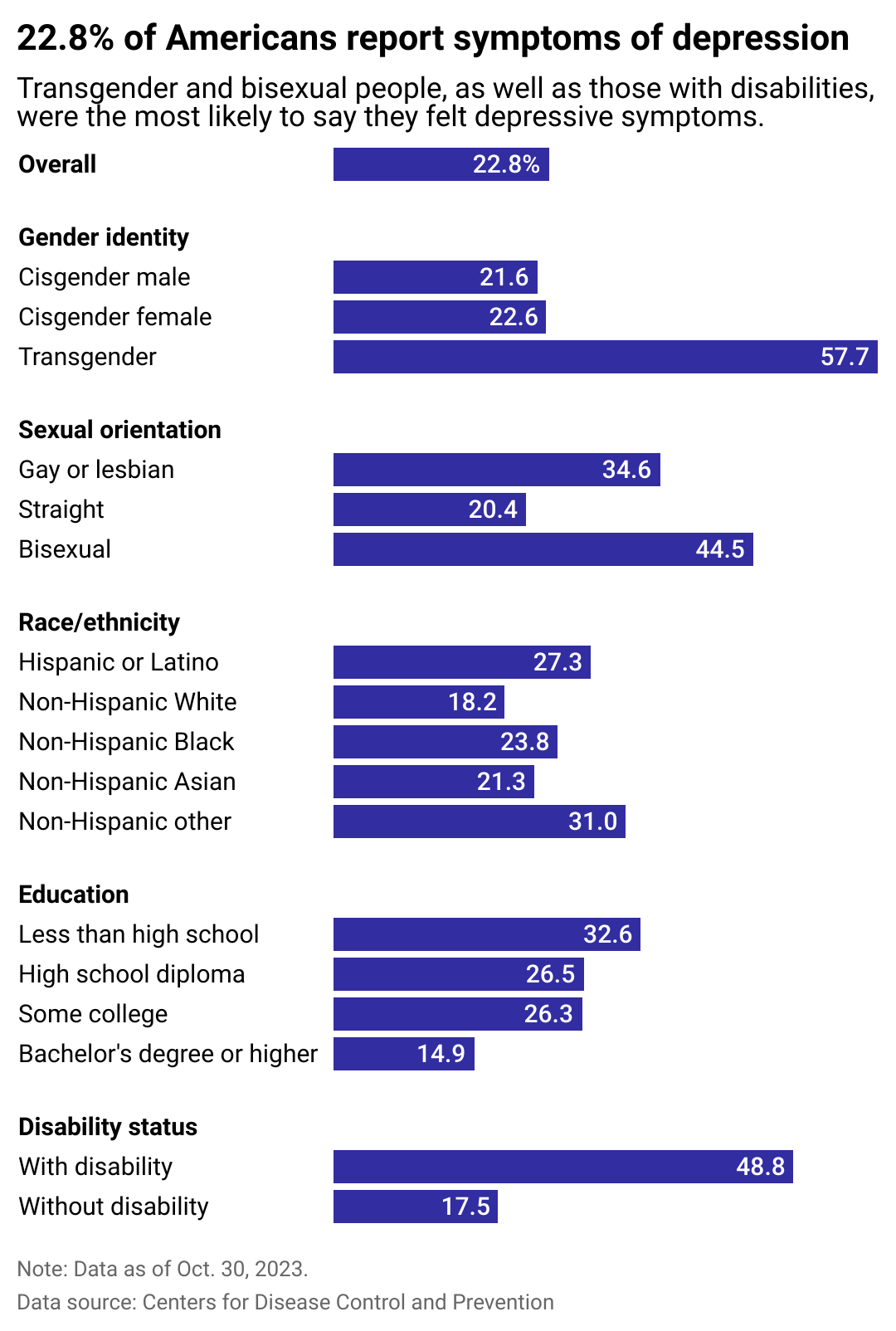
Canva
Written by Dom DiFurio
Nearly a quarter of Americans struggle with symptoms of depression, according to the latest Centers for Disease Control and Prevention data from an October 2023 survey. That number is down from 2020 to 2021, when the COVID-19 pandemic exacerbated mental health conditions for millions of Americans.
Like other forms of mental illness, depression impacts groups of people differently depending on their unique backgrounds and experiences. While depression is among the most common forms of mental illness, some portions of the U.S. are seeing rates of depression fall faster than others.
Northwell Health partnered with Stacker to look at which groups of people are the most likely to feel depressed, using data from the CDC.
Signs someone may have depression include an inability to focus, thoughts of death or suicide, hopelessness, and low self-worth, as well as changes in appetite and sleep patterns, according to the World Health Organization.
Depression can be transitory—brought on by the loss of a loved one or other difficult life events—or chronic, such as for those who live with bipolar disorder. The latest data on depression rates suggest some of the uptick in depression during COVID-19 may have been more of the former.
Depression has lingered at elevated levels for some communities, including young people and those who identify as part of the LGBTQ+ community.

Northwell Health
Younger people are still more likely to be depressed
Americans ages 18 to 29 years old report the highest levels of depression, with those 30 to 49 years old showing the next highest levels, according to the CDC. Rates of depression taper off even more as Americans clear the age of 60.
Higher reported rates of depression in young people could partially be attributed to the way each generation views mental illness. Members of Gen Z, those born between 1997 and 2012, have been more open to talking about mental illness and seeking therapy, for example, than older generations who came of age at a time when mental health disorders were heavily stigmatized in media and popular culture.

Northwell Health
Stress from discrimination contributes to more frequent depressive symptoms for some demographics
Surveys have found that discrimination is often cited as a significant source of stress; Black and Hispanic adults, specifically, report higher levels of stress from discrimination compared to their white peers.
When it comes to depression rates, a similar trend appears. Hispanic, multiracial, and Black Americans report elevated rates of depression compared to white Americans, according to the latest survey data the CDC collected in late 2023.
Furthermore, LGBTQ+ Americans have reported higher levels of stress and mental illness compared to straight, cisgender people. Transgender individuals are also more than six times as likely to attempt suicide, according to a Swedish study published in The American Journal of Psychiatry—one of the only studies to compile such data for an entire country over a 10-year period.
The current rates of depression among more vulnerable groups are particularly concerning at a time when mental health professionals are struggling to meet a higher demand for mental health care services.
Story editing by Shannon Luders-Manuel. Copy editing by Tim Bruns.
This story originally appeared on Northwell Health and was produced and distributed in partnership with Stacker Studio.















